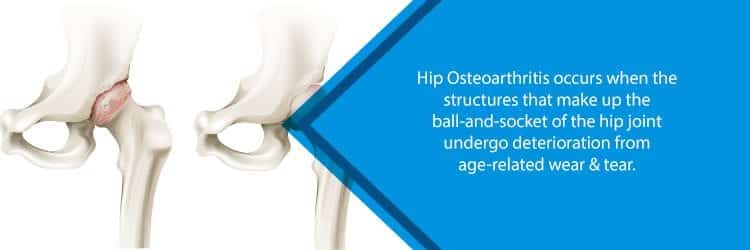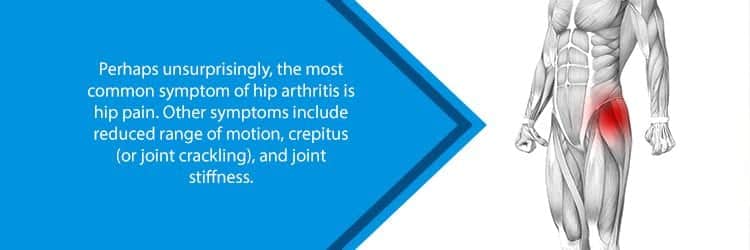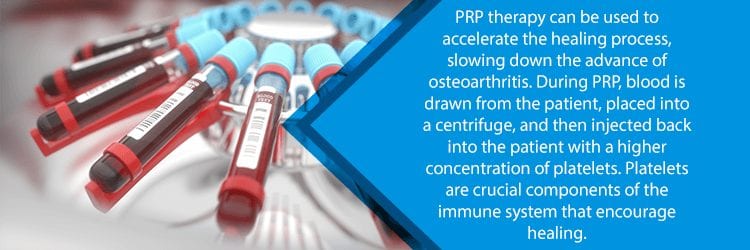Arthritis, in general, is a pretty interesting condition. There are just so many different types of the disorder. In fact, doctors group certain forms of arthritis under different medical classifications than other types of the disease. As a general rule, arthritis describes a type of joint inflammation, usually caused by age-related wear and tear. Of course, this isn’t always the case. Rheumatoid arthritis (RA), for example, is an autoimmune disorder that causes the body’s immune system to attack its own tissues. Because RA is an autoimmune disease, it can affect patients of all ages—from juveniles to adults or seniors.
As you might imagine, however, age-related wear and tear is the usual culprit when it comes to arthritis. After all, anything with moving parts will wear down with repetitive use. And, the body is packed to the brim with mechanisms that undergo constant stress. The medical community refers to this age-related form of the condition as osteoarthritis. By far, osteoarthritis is the most common form of this degenerative disease.
Simply put, the older you become, the more likely you are to develop osteoarthritis. As we age, we all experience some degree of degeneration when it comes to our joints. However, that does not necessarily mean that everyone is on a course for developing osteoarthritis. Some people are fortunate enough to experience degeneration with little to no painful symptoms as a result. It depends on a variety of factors, from your genetic predispositions to certain lifestyle choices. Though osteoarthritis may affect many different joints in the body, today’s article will specifically focus on cases that affect the hip.

Hip Osteoarthritis & Anatomy
The hip is one of the largest joints in the entire body. Furthermore, it regularly bears a pretty hefty load, so it is not uncommon for osteoarthritis to manifest at this location. Doctors classify the hip as a ball-and-socket joint. The acetabulum (a cavity or “socket” in the pelvis) interlocks with the femur or thighbone. The “ball” of the joint itself is the rounded femoral head, which sits atop the thighbone.
The bony surfaces of any joint in the body work in tandem with articular cartilage. Cartilage works in a fashion similar to motor oil. It’s a slippery material that rests between the bones, thereby reducing friction and preventing them from grinding together. This function is further abetted by the existence of the synovium, which produces a tiny portion of fluid that aids the cartilage in its lubricating purpose. Additionally, this fluid also gives the joint a greater range of motion.
Sadly, these structures are not as easily replaceable as motor oil. Of course, that is not to say that there aren’t any treatment options available for osteoarthritis—quite the contrary, in fact. Like any medical condition, your treatment options will depend on the severity and nature of your condition. Many find that they are able to overcome osteoarthritis without the need for surgery. However, more severe cases may necessitate minimally invasive surgical procedures. Most importantly, you should address your osteoarthritis issue as soon as possible. As osteoarthritis wears your cartilage away, the surrounding bones will become damaged and eventually form bone spurs. Degenerative conditions like this are almost always progressive. Therefore, if you wish to get better, you’re going to need a little outside assistance.
Hip Osteoarthritis Symptoms & Diagnosis
You could probably guess this, but the main symptom of hip arthritis is hip pain. That being said, the pain has a very specific nature of which you should be aware. Because the disease is a degenerative condition, it starts slowly and progresses with time. Although not nearly as common, there have also been some reported cases involving a sudden onset of painful symptoms. As the condition worsens, painful episodes will manifest more frequently and intensely (even during sedentary activities). In addition to all of this, you may also experience the following:
- Groin/thigh pain that radiates to the knee
- Pain that worsens with strenuous activity
- Joint stiffness
- Difficulty walking/bending
- The joint locks up with an accompanying grinding noise during motion
- Reduced range of motion

Your doctor will begin your diagnosis by asking you questions regarding your symptoms and taking a brief overview of your medical history. Generally, he or she will then follow this up with a physical examination. During this evaluation, your doctor will look for certain signs, such as tenderness around the affected joint, range of motion issues, crepitus, and any problems that you might experience while walking. If your doctor suspects osteoarthritis at this point, it is likely that he or she will want to confirm it with an imaging test, such as an X-ray, MRI, or CT scan.
Nonsurgical Treatment Options for Hip Osteoarthritis
If your condition is caught early enough, chances are you will likely be able to avoid surgery altogether. Of course, in some cases, surgery may be necessary from the get-go, such as instances that involve some degree of trauma. To find out what is right for you specifically, communicate with your doctor.
There are many different types of medications that can alleviate the painful symptoms of osteoarthritis. In fact, one of the most common forms of treatment involves acetaminophen and NSAIDs (both over-the-counter and prescription).

As you might expect, both physical and occupational therapies are highly effective in treating osteoarthritis. Some patients also find that aquatics therapy is just as helpful at minimizing painful symptoms as these other methods. Performing certain exercises, for instance, will allow you to regain your range of motion. Furthermore, you will also achieve increased muscle mass in your hip and leg. For more information about effective exercises for hip arthritis, get in touch with a physical therapist. He or she will tailor an exercise plan to suit your specific needs.
It is also important to note that many patients find relief with assistive devices and simple lifestyle changes. Using devices such as hip braces or walkers will improve your mobility while other implements such as reachers will prevent you from having to bend down to pick up floor-level objects. As far as lifestyle changes are concerned, try to eliminate any of the activities that aggravate the painful symptoms associated with your condition. For example, if you typically like to jog for exercise, switch things up a bit and give cycling a try. Your hip will thank you.
Contact Us
Do you have hip pain that isn’t going away with conservative treatment methods? If so, you may want to give NJ Spine and Orthopedics a call at (855) 586-2615. Our facilities employ award-winning spine surgeons and medical staff who are passionate about delivering superior spine care. Our doctors will exhaust conservative methods before even considering hip surgery. And, when surgery is the only option, we will use the latest and greatest in minimally invasive surgical technology to resolve your pain. Don’t let your painful symptoms keep you from enjoying your everyday life. Contact us today!

